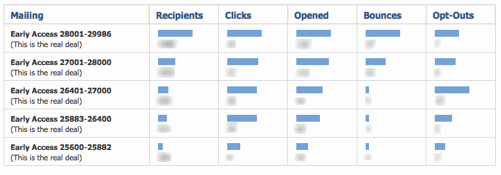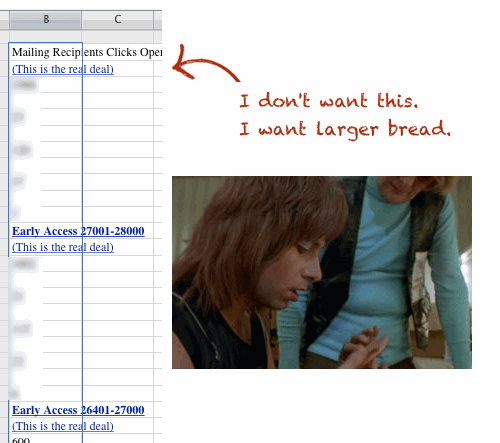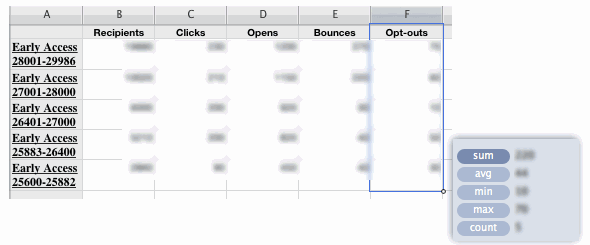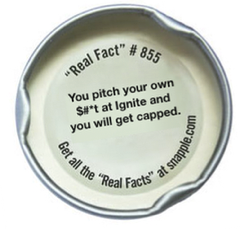This post is part of an ongoing series entitled “a post a day for the month of may.” It’s an unfolding exploration of the concepts from the book “Get Lucky.”
 I had intended to explore a sister concept of parallax today that is another byproduct of practicing the skill of motion. But I want to instead divert to another idea. I’m going to go out on a limb and predict that the concepts Lane and Thor are proposing will slowly gain mainstream acceptance with execs over the next few years and we’ll see a new job description emerging from the companies who are willing to acknowledge and embrace them.
I had intended to explore a sister concept of parallax today that is another byproduct of practicing the skill of motion. But I want to instead divert to another idea. I’m going to go out on a limb and predict that the concepts Lane and Thor are proposing will slowly gain mainstream acceptance with execs over the next few years and we’ll see a new job description emerging from the companies who are willing to acknowledge and embrace them.
A “serendiplomat:” an ambassador of luck whose sole job it is to help cultivate the Get Lucky skills within an organization. Sound wacky? Consider the unthinkable notion of a paid social media person even just ten years ago. Or what about the idea of a company hiring a full time chef and feeding their entire campus gourmet meals as a perk of working there? Here’s an even better story from a small company right here in AZ.
There’s a little company in Gilbert called Infusionsoft. I have a particular fondness for these guys because I know a bunch of folks there and I’ve had court side seats to watch them go through a dark tunnel and now emerge and be poised to absolutely crush it. We became a customer of theirs recently (their software basically brings Marketo/Eloqua type marketing automation to the SMB only better because it comes with an integrated CRM). But I digress… these guys are hiring like crazy right now and one of the twenty-one (2-1… two one) open positions on their career board is “Dream Manager” (here’s a screenshot since it will no doubt be filled and disappear). This is the stated job description:
As this “too-good-to-be-true” job title implies, the Dream Manager will manage the process of helping our employees articulate and pursue their dreams. The creation of this job is based on the ideas introduced in The Dream Manager, one of Matthew Kelly’s books. By opening this opportunity we’re creating space for our employees to dream. This investment is in direct support of one of our core values…We believe in people and their dreams.
Wow. Here’s a company progressive enough to realize that dreams of their employees (arguably one of the most intangible and unquantifiable thing you could imagine) are important enough to support that they carve out a dedicated position to nurture them. Just, wow.
I hear a business adage repeated frequently: “you can’t improve something until you can measure it.” It’s one of those innocuous sentences that is easy to nod your head in agreement with while the person saying it instantly accrues wisdom points just for repeating it. Guess what. It’s dead wrong. You can improve in absence of measurement, it just may be difficult to attribute causation directly to a specific action in absence of a controlled environment. And the corollary to that statement: our inability to quantify forces makes them no less real. Hey, I’m a fan of metrics. We track every relevant possible stat across our businesses because these indicators give insight to make better decisions. But that doesn’t stop me from doing things the results of which aren’t being tracked. Let’s all agree to dispense with this damaging idea that seems to have emerged in the stampede towards having ubiquitous metrics for everything. I’ll say it again for emphasis: you can improve things that you can’t measure.
Need proof? Go hit tennis balls every night for a month and I guarantee you’ll be a better tennis player a month from now. How much better? I don’t know. Want to get stronger? Walk out in your backyard and curl a boulder a couple times everyday and watch your strength improve. How much? Who cares. The point is we shouldn’t let the mandate to measure everything deter us from strengthening muscles which don’t today lend themselves to being measured. Just like tribes who had a shaman I predict we’ll soon see companies hiring a serendiplomat who has innate skills of serendipity to help usher these skills into their organization. And if you ever see “serendiplomat” on a job board tell ’em you heard it here first ;-)
Change your tune: The Used – Moving On


 Here’s the crux of the epiphany: When I was eight I got one of the very first Sony Walkman’s (this is the closest pic I could find but I swear mine was even more old school). I had a bunch of teeth pulled right when this miraculous device debuted and my parents figured it would a good distraction to fill my head with music during the recovery period. This turned out to be a genius move on their part and worked really well. In spite of having awful pain from every corner of my mouth, this new incredible way to experience music trumped everything and transported me beyond the pain. Now here’s why this is relevant:
Here’s the crux of the epiphany: When I was eight I got one of the very first Sony Walkman’s (this is the closest pic I could find but I swear mine was even more old school). I had a bunch of teeth pulled right when this miraculous device debuted and my parents figured it would a good distraction to fill my head with music during the recovery period. This turned out to be a genius move on their part and worked really well. In spite of having awful pain from every corner of my mouth, this new incredible way to experience music trumped everything and transported me beyond the pain. Now here’s why this is relevant:



 A friend of mine Brandon conducted an experiment called awhile back called “
A friend of mine Brandon conducted an experiment called awhile back called “ If you know you’re going to be publicly shamed on stage when you willingly violate the presentation guidelines and slang your own stuff, you’ll either a) steer clear of this practice or b) violate it and provide some serious amusement for the audience. Either way- WIN!
If you know you’re going to be publicly shamed on stage when you willingly violate the presentation guidelines and slang your own stuff, you’ll either a) steer clear of this practice or b) violate it and provide some serious amusement for the audience. Either way- WIN!





